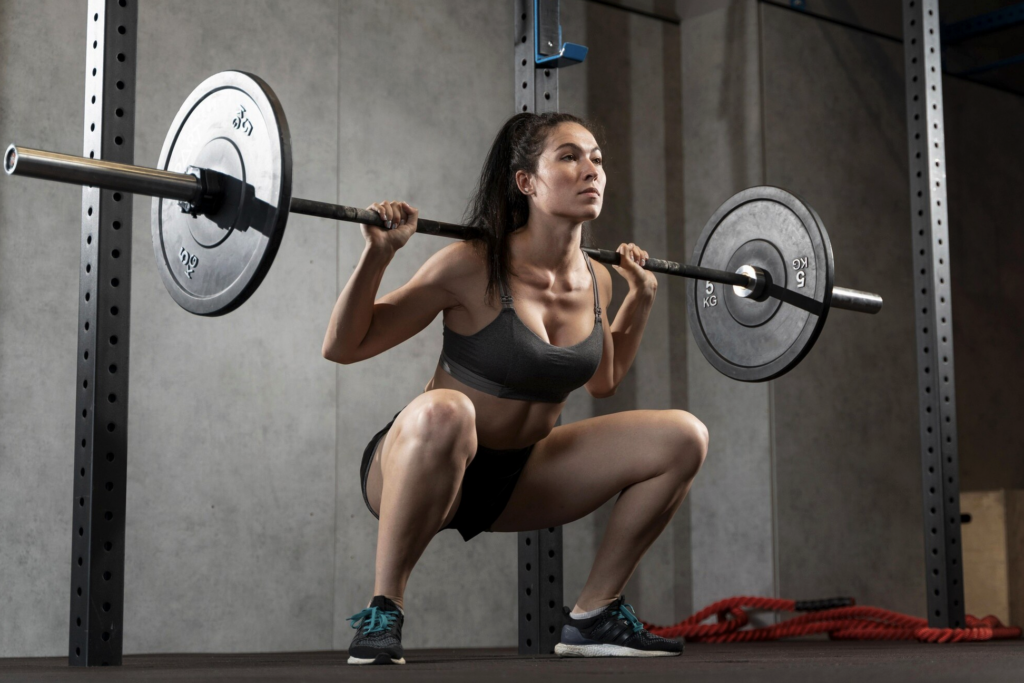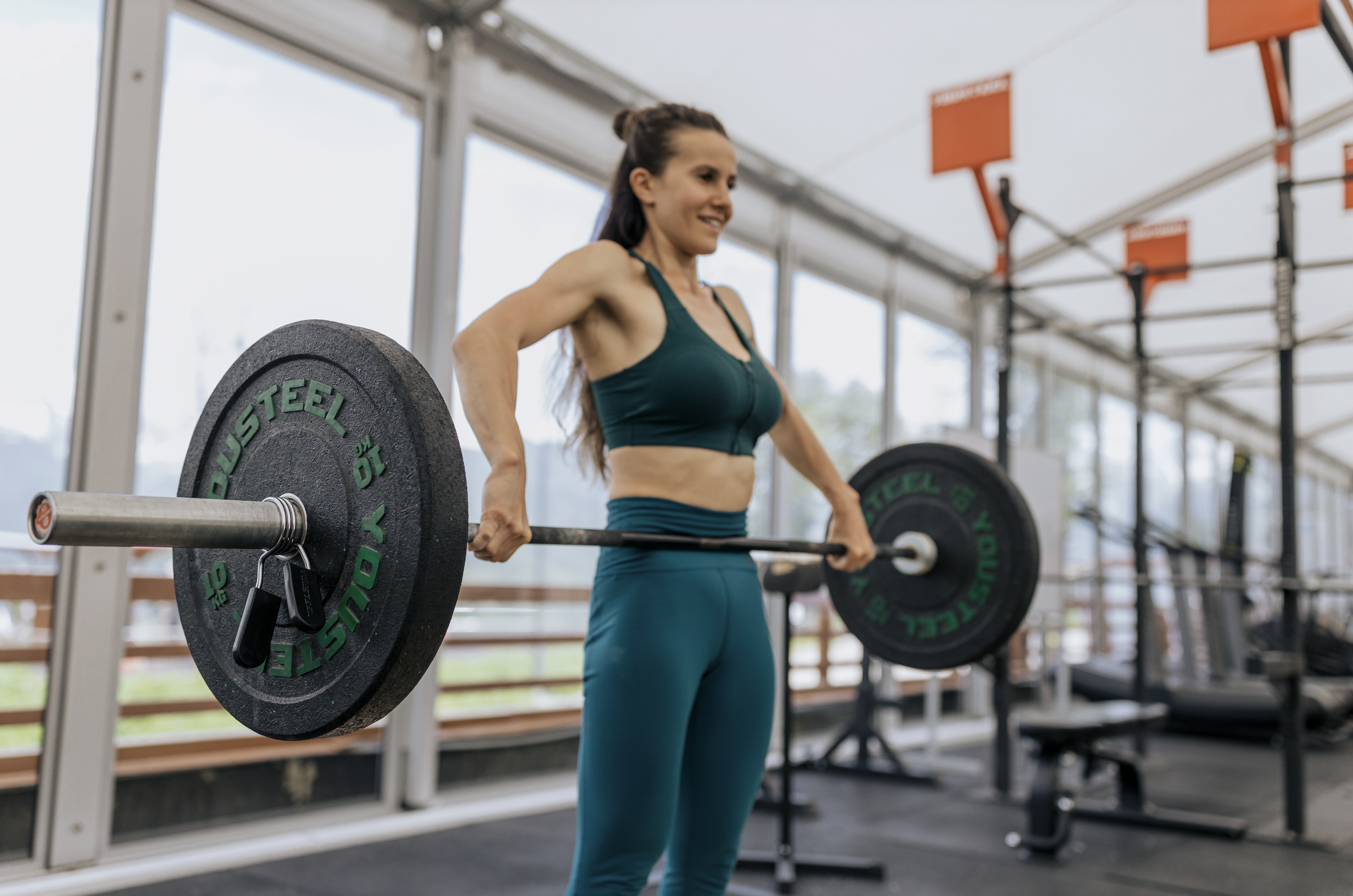Personal Trainer
Strength Training for Women
Throughout the history of weightlifting and resistance training, the general assumption is that lifting weights is in the singular domain of men, not women. Women weren’t meant to have muscle mass — it wasn’t “feminine.”
Thankfully, the conversation has changed, in large part because of the current discourse on just how essential weight and resistance training is for everyone, not just elite athletes, professional players or men. There are myriad benefits for women, especially as we age. Here, I outline why weight training for women is critical. (And, no, you won’t get bulky.) Read on!
It Builds Muscle Mass and Slows Down Muscle Loss
Resistance training will help you build (and keep) muscle mass. Why is this important? As we age, we begin to lose some of our muscle mass, known as sarcopenia. This process begins in our ‘30s and doesn’t stop, it speeds up the older we get. The rate of muscle mass decline begins around 3-8% per decade, but after age 60 this rate is even higher. Menopause has also been found to be related to muscle loss due to the drop in estradiol.
How Does This Affect Your Physical Health?
Age-related decreases in muscle mass are accompanied by decreases in strength and function, which can lead to an increased risk of falls, injury and frailty as you become an older adult.
How Do You Prevent This?
Simple, you must start or continue to resistance train and stay active. While there are genetic factors out of your control that play a role in how you’ll age, you can control your actions and lifestyle. Maintaining or starting a progressive exercise routine— which is when you gradually increase the weight, frequency, or number of repetitions in your strength training routine—can help prevent and manage muscle loss. Progressive “overload” challenges your body and strengthens your musculoskeletal system. Examples of a progressive training routine can include squats, chest and shoulder presses, rows and deadlifts, and many more. Remember that this routine should be performed twice to four times per week to allow enough exposure for your muscles to progress over time.

It Maintains and Builds Bone Mass
Resistance exercise helps build bone mass and increase bone mineral density—it is essential. To effectively strengthen them, you must place mechanical stress upon your bones, such as load or weight.
According to The Effectiveness of Physical Exercise on Bone Density in Osteoporotic Patients, when women approach menopause and their post-menopausal years, bone mineral density and bone mass can decrease from 0.6% to 2.1% per year from age 60 to 80 and over. As you age, building bone mass and improving bone mineral density becomes increasingly more challenging, so start a resistance training program as soon as possible and keep up with weight-bearing activities such as walking and running. Sports will be a significant factor in preventing frailty and maintaining bone strength as you age.
It Lowers the Risk of Type 2 and Gestational Diabetes
According to Diabetes Canada, Type 2 diabetes is when a person cannot correctly use the insulin produced by their bodies, or their bodies are unable to produce insulin. Why is this significant? Insulin is a hormone produced by the pancreas used to regulate your blood sugar, which is important because your blood sugar must be closely controlled so that your body functions properly and has enough energy. Type 2 diabetes often develops during adulthood and can be prevented or managed with proper diet and exercise.
How Does Exercise Help Control or Reduce the Risk of Diabetes?
The effect of exercise on your blood sugar will vary, depending on the type and duration of activity. Physical activity makes your muscle cells more sensitive to insulin and can increase insulin sensitivity for up to 24 hours. Also, when your muscles contract, the muscle cells can use the glucose from your bloodstream, whether or not insulin is available. The critical takeaway is that exercise or resistance training will lower your blood glucose (blood sugar) in the short term.
More About Gestational Diabetes
Gestational diabetes develops while a woman is pregnant. This is due to the body being unable to produce enough insulin to support the effects of the growing baby and changing hormone levels. In most cases, gestational diabetes can be better managed with physical activity and a proper diet. It is vital to manage gestational diabetes to avoid complications with the baby and lessen the chance that the mother or baby will develop. Type 2 diabetes or heart disease later in life. Starting or continuing an exercise routine pre- and post-partum, eating a healthy diet and remaining at a healthy weight can help to lower the risk of developing gestational diabetes.
It Improves Your Mental Health
It’s no secret that exercise has been associated with improved mental health. No matter what age you are, your body craves movement. According to the World Health Organization, adults should participate in muscle-strengthening activities at least twice weekly to benefit their overall health. However, the World Health Organization also states that only 20% of adults report meeting this guideline.
There are many ways your mental health may improve through regular exercise, including better sleep, self-acceptance, personal growth, social affiliation, and autonomy. A qualitative study exploring the ways gym-based resistance training can affect women’s mental health found that an increase in self-esteem and confidence leads to developing a more positive attitude towards themselves and increasing their motivation to push themselves towards their training goals. Personal growth was another factor expressed by the participants, where the feeling of wanting to be better at something that matters produced feelings of enjoyment and improved well-being. The participants in the study said that they felt autonomy in regulating their behaviour, resisting social pressures, and comparing themselves to
personal standards rather than the expectations of others. They also thought that they were breaking gender norms and stereotypes that surround resistance training as being a male-dominated activity

Weightlifting Won’t Make You Bulky (Unless You Want It To)
This is a common misconception: you build muscle mass, you build bulk. Women won’t bulk up when they start lifting weights. What they will do, though, is lose body fat and achieve the “toned” appearance so many people are after. Most female clients whom I’ve had the pleasure of working with have described their primary goal as looking toned. To appear “toned,” you must build your muscles and lose body fat to see that muscle you worked so hard to create. If you don’t build the muscle underneath the fat you want to lose, you’ll look relatively the same, just smaller and weighing less.
As mentioned above, muscle mass is essential for longevity as you age and goes beyond physical appearance. Muscle is not unfeminine, and it can help you build the feminine-looking body you are trying to achieve by helping lower your body fat and increasing your resting energy expenditure. When you increase your muscle mass, your body needs more calories to function daily. With the proper training and diet, you can build your strength and muscle, and unless your goal is to compete on a body-building stage, it’s safe to say that you won’t look “bulky.”
This is a common misconception: you build muscle mass, you build bulk. Women won’t bulk up when they start lifting weights. What they will do, though, is lose body fat and acheive the “toned” appearance so many people are after. Most female clients whom I’ve had the pleasure of working with have described their primary goal as looking toned. To appear “toned,” you must build your muscles and lose body fat to see that muscle you worked so hard to create. If you don’t make the muscle underneath the fat you want to lose, you’ll look relatively the same, just smaller and weighing less.
As mentioned above, muscle mass is essential for longevity as you age and goes beyond physical appearance. Muscle is not unfeminine, and it can help you build the feminine-looking body you are trying to achieve by helping lower your body fat and increasing your resting energy expenditure. When you increase your muscle mass, your body needs more calories to function daily. With the proper training and diet, you can build your strength and muscle, and unless your goal is to compete on a body-building stage, it’s safe to say that you won’t look “bulky.”
Begin Your Journey with Us
If you’re finding it challenging to get started on your journey, feel free to reach out to us for a complimentary consultation. We would be more than happy to offer some guidance to help you move forward. Sometimes taking the first step is the hardest, so don’t hesitate to get some help to kickstart the process. We all start somewhere.

